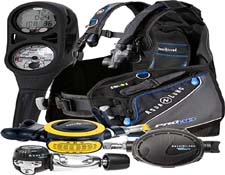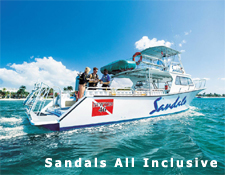|
Dominica Travel Information
Diving in Dominica
As one of the top ten diving destinations in the world, Dominica has so much to offer divers of any experience level. There are calm shallows to explore, where curious seahorses cling to coral branches. Deeper waters make a home for over 20 species of whales that frequent these seas. A big attraction is the pod of sperm whales that stay close to the island from November to March.
The sharp, jagged peaks on land make their way into the water, offering scuba divers fantastic wall dives and unique crevices to explore. La Sorciere, also known as L’Abym, is one of the most popular wall dives, where divers can peruse easily, as there is little to no current.
Make your way along the volcanic ridge of Crater’s Edge, where barracuda stalk their prey and large schools of tuna and snapper make appearances.
Thermal springs erupt around the island, including underwater where volcanic bubbles and warm water emanate from certain sites.
When to go
Diving is good all year. It’s calmer and dryer in the winter months. The rainy season lasts from June through October, which is the Caribbean’s hurricane season. However, the air temperature ranges from 22°C/73°F in winter to 28°C/82°F in summer. Furthermore, the water averages 25°C/78°F in winter and 28°C/82°F in summer, and visibility is usually good, ranging from 15-30 metres/50-100 feet.
What to see
You’d certainly be missing out if you didn’t go out on a whale watching trip during your time on Dominica. Sperm whales are particularly common, especially from November to March. There’s also an abundance of dolphins to be spotted leaping from the cobalt waters.
The reefs teem with many different marine species, from eels to sharks to shrimp. Look out for flamingo tongue shells, frogfish, flying gurnard, Creole wrasse, seahorses, eagle rays and stingrays. You can see colorful fish flitting amongst the coral heads and striped sea snakes slithering effortlessly through the seas.
Four different species of turtles nest on the island of Dominica: leatherback, green, loggerhead and hawksbill.
Country
A high volcanic island covered with lush, green rain forests, Dominica has hundreds of waterfalls and rivers and two boiling lakes. If you’re looking for a vacation that provides interaction with unspoiled nature both above and below the water, Dominica is the place.
Tucked down into the bottom of the Caribbean, Dominica is a gorgeous island just off the beaten path. Rare creatures abound, which remained uninhabited for millennia. You can see the Sisserou parrot, the country’s national bird, only on the island of Dominica. Rainforests and mountains dominate the landscape, the perfect stopping point for birds on the wing.
For many years, colonial powers struggled over Dominica, using the island to house and transport slaves. The country gained its independence in 1978, though relics of the olden days can still be found. Islanders today rely heavily on tourism, though fishing is an important facet of day to day life.
Curiously, the island was named by Christopher Columbus himself, who discovered the island on a Sunday (Dominica, in Latin).
Other attractions
During your visit to Dominica, head inland to see some of the many waterfalls scattered throughout the jungle. Trafalgar Falls, Victoria Falls and Emerald Pool are the best ones. Stop at one of the geothermal baths, called sulphur springs, around the island. And hike through the Morne Trois Pitons National Park to the Boiling Lake. It is highly recommended to bring a guide, a helpful accomplice as you make the trek to the lake.
Getting there
There are two airports that receive flights from other Caribbean nations – Melville Hall Airport and Canefield Airport. International guests must fly into one of the Caribbean hubs and then hop to Dominica. After flying or boating to the island, getting around is best accomplished via a rental car. The island is fairly large, and there are points of interest scattered all over.
Main airport
Note - Travel to any destination may be adversely affected by conditions including (but not limited) to security, entry and exit requirements, health conditions, local laws and culture, natural disasters and climate. Regardless of your destination, check your local travel advisory board or department for travel advice about that location when planning your trip and again shortly before you leave.
Source: PADI
|




























